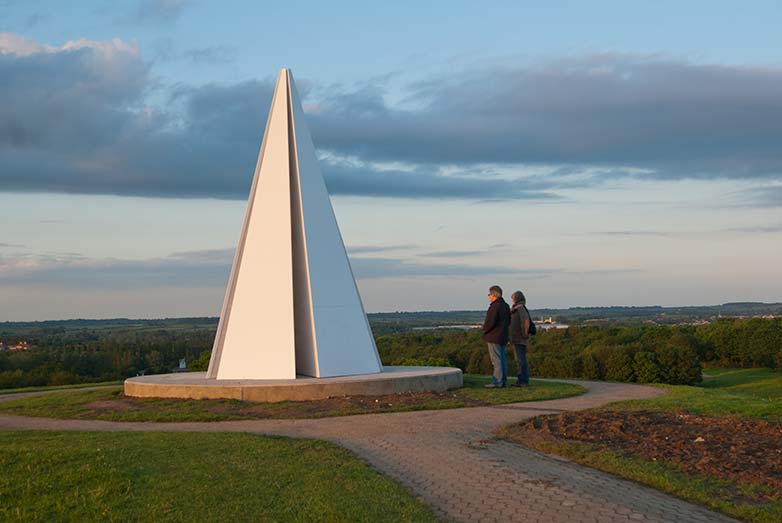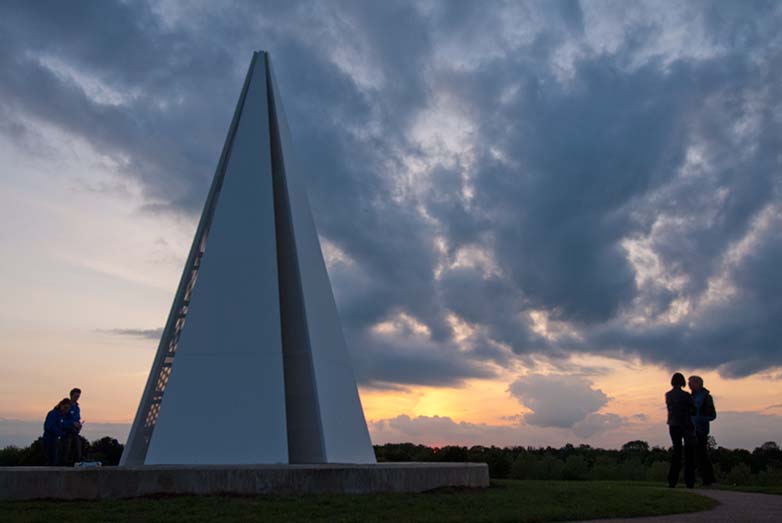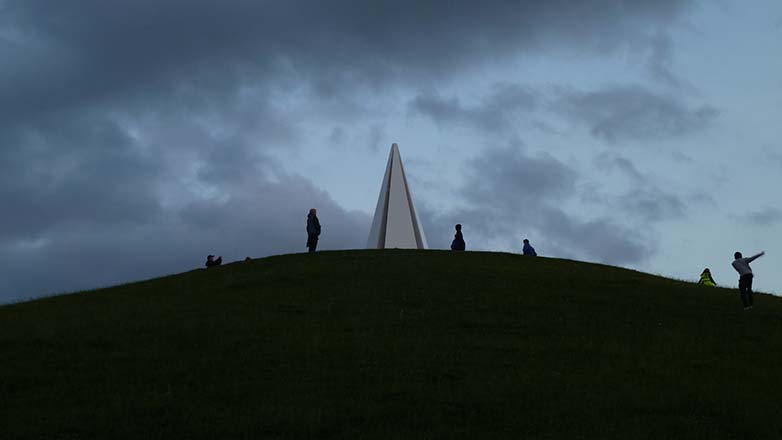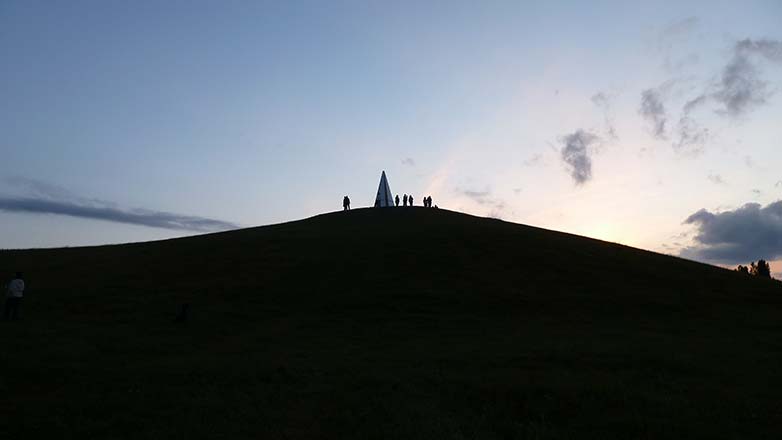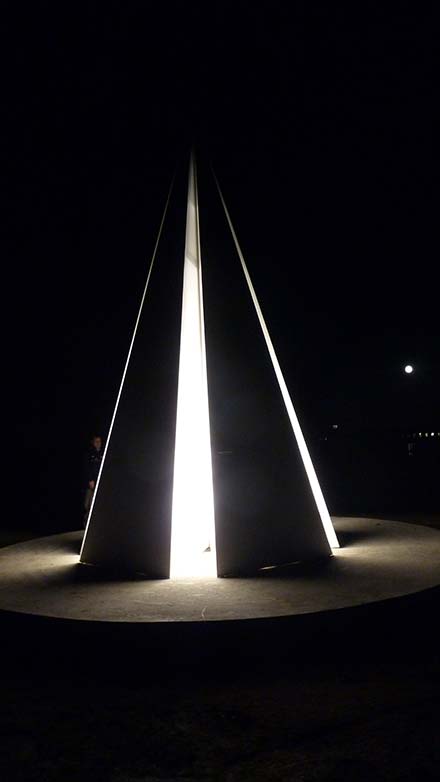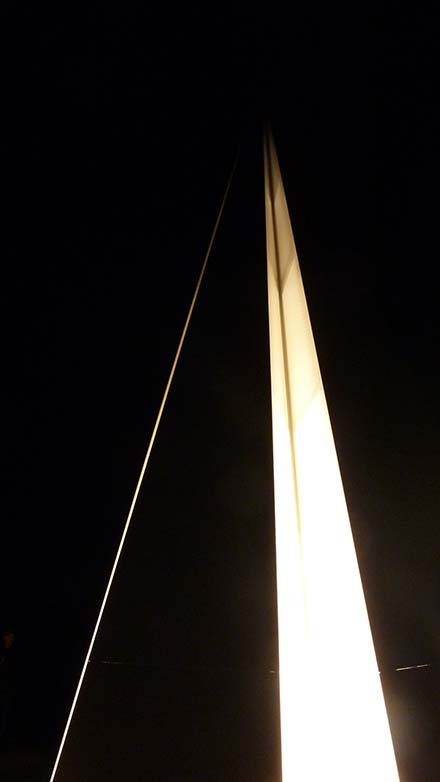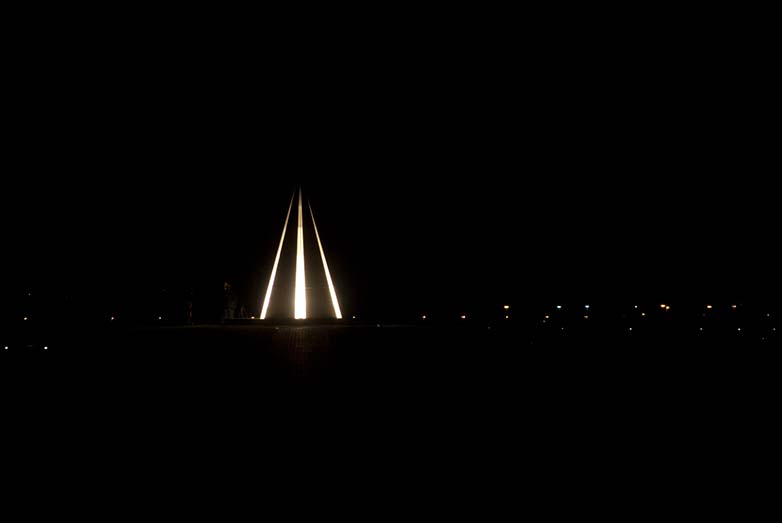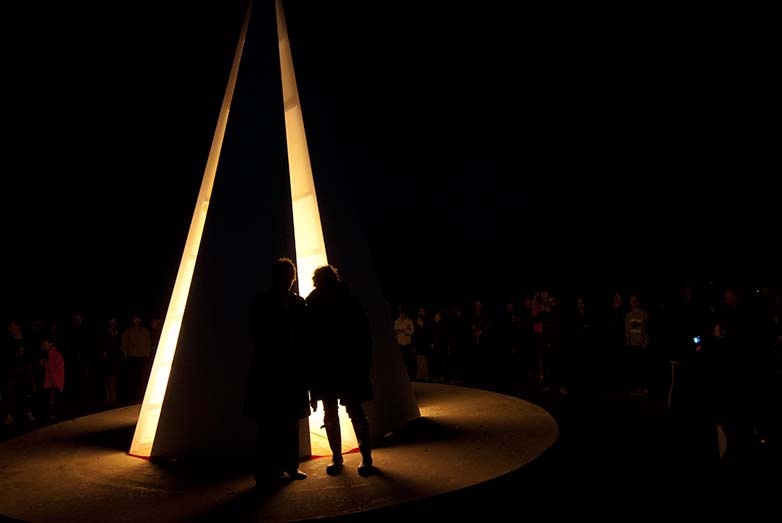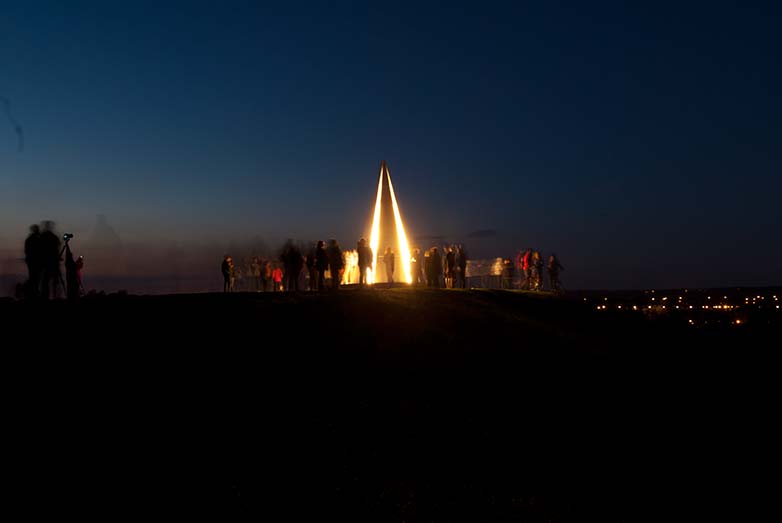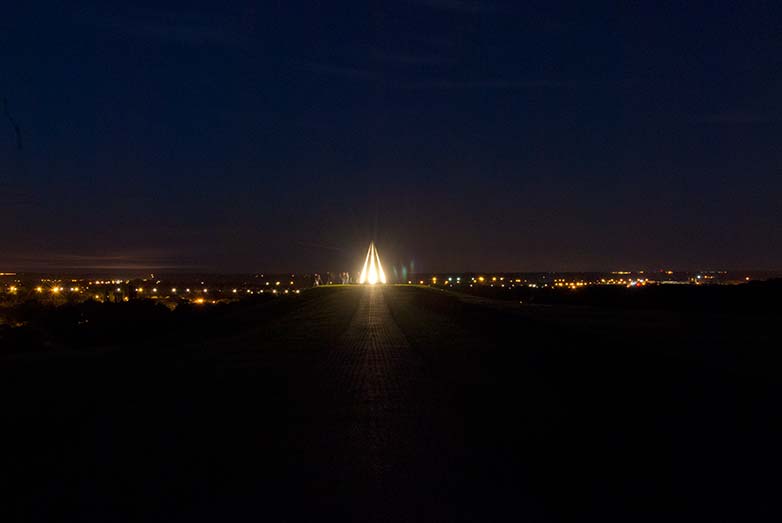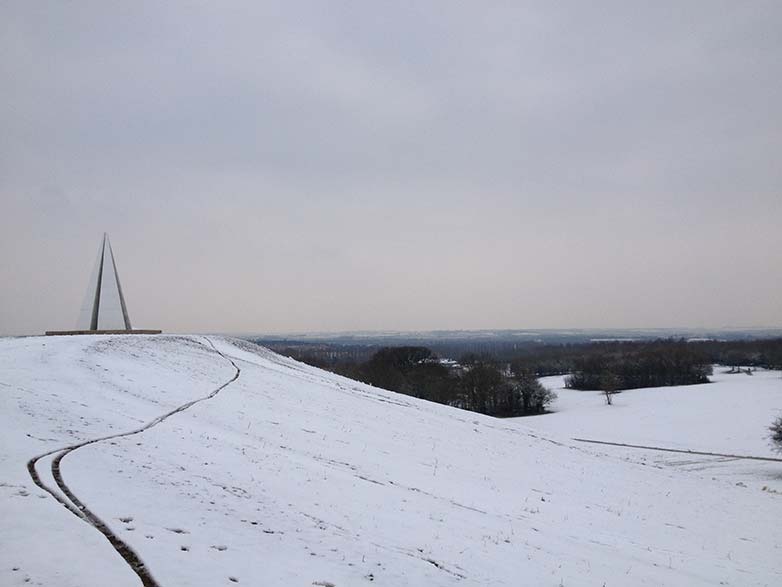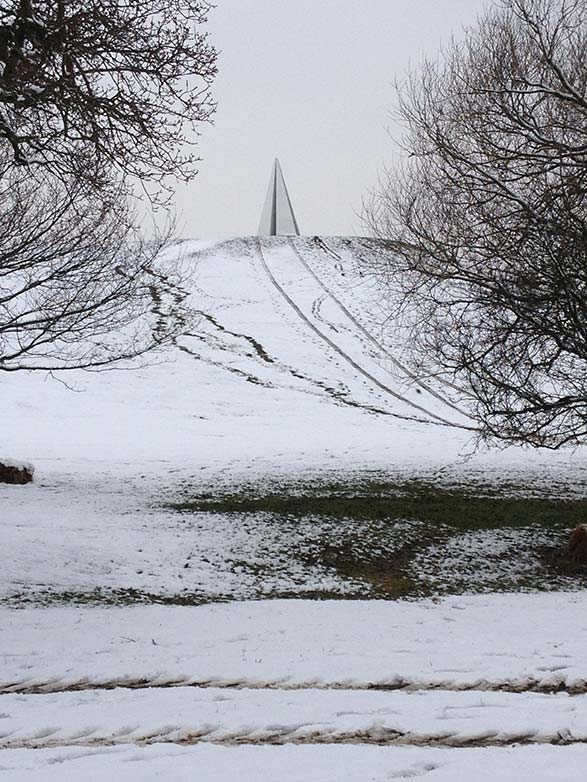Light Pyramid
2012
600 cm x 300 cm diameter, standing on 600 cm diameter concrete base
Powder-coated hot-galvanized mild steel plate and perforated powder-coated hot-galvanized mild steel on a mild steel framework, 5 metal halide 500 watts floodlights.
Commissioned by MK Gallery and Milton Keynes Parks Trust as a sculpture beacon.
Light Pyramid is sited at the end of the Belvedere (a made-made feature formed at the time of the original construction of the city centre), in Campbell Park, Milton Keynes, the sculpture is located at the eastern most end of Midsummer Boulevard and the highest point in the park. The site within Milton Keynes’ city park affords extensive views of the surrounding Buckinghamshire and Bedfordshire countryside, from which the pyramidal sculpture is itself prominently visible.
Geometry and Light are the guiding threads of Lijn’s work. The central concept of this sculpture is that of energy held within matter. Matter assumes form and form leads to geometry. The triangle is the geometrical form most related to light: emission, angles of reflection and refraction, the prism.
Light Pyramid has been developed from her earlier geometric work, Inner Light, and plays with a very similar geometry. The wedge geometry is interesting in that in plan, each of these is a 60˙ equilateral triangle with a 120 cm side, whereas in elevation, one angle is 90˙ to the base, whereas the other two are each 65˙, thus appearing to form an inclined triangular solid.
In Light Pyramid, Lijn uses a similar geometry for each wedge or triangular solid. Using five wedges and positioning them so that the tips of each triangle meet at the centre of the circle forms a pyramid made of triangular wedges, interrupted by narrow triangular gaps. Fabricated in powder coated painted steel, the outside plane solid plate, the two inner planes perforated, allows light, from concealed flood lights within each wedge, to radiate from the narrow open areas.
Unlike a mathematician, Lijn works through quite complex geometries by making models and moving them around. Relationships and differences are what most interest her as well as reversibility. Geometry in her work seems always to lead to a revelation of the relationship between the outer form and the inner content. Thus, this structure appears as a defensive formation, shields facing outward, protecting the translucent inner body, a much softer surface that emits light.

